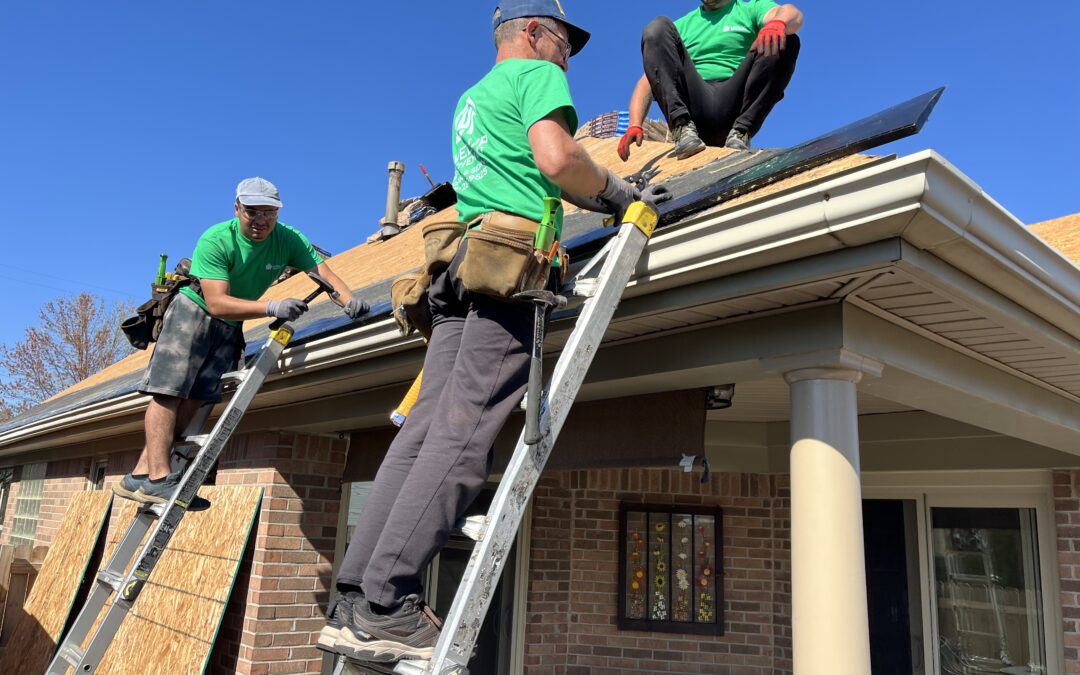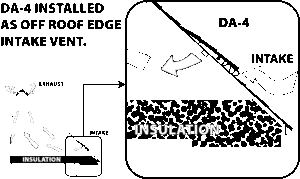Do You Have the Right Intake Vents for Your Roof in Southeast Michigan?
When it comes to your home’s roof, most homeowners think about shingles, gutters, and maybe even insulation. But there’s one part of your roof system that often gets overlooked—and it’s one of the most important.
We’re talking about intake vents.
If your roof doesn’t have the right intake vents, or if they aren’t working properly, your attic can become a trap for heat and moisture. That can shorten the life of your roof, increase energy bills, and even cause mold and structural damage.
As a roofing professional with experience working on homes throughout Southeast Michigan, I can tell you that intake ventilation is something you don’t want to ignore. Let’s dive into why intake vents matter, the different types available, and how to know if your home has the right system in place.
What Are Intake Vents?
Intake vents are openings that allow fresh air to enter your attic. They work together with exhaust vents, which let hot, stale air escape. Think of it as a push-and-pull system: intake vents bring in cooler air from the outside, while exhaust vents push warm air out the top. You cannot exhale unless you inhale first. You’re attic is the same way.
Without the right intake vents, your attic becomes a closed box where heat and moisture get trapped—and that spells trouble for any home in Michigan’s extreme climate.
Why Intake Vents Matter in Southeast Michigan
Here in Southeast Michigan, we see just about every type of weather:
-
Cold, snowy winters put roofs under heavy load and trap ice dams.
-
Hot, humid summers cause attics to overheat, sometimes reaching 140°F or more.
-
Rainy springs and falls create constant moisture challenges.
The right intake vents balance airflow, which helps:
-
Extend your roof’s lifespan by reducing heat buildup under shingles.
-
Prevent ice dams in winter by keeping roof temperatures even.
-
Stop mold and mildew growth by lowering attic humidity.
-
Improve energy efficiency so your HVAC system doesn’t work overtime.
Signs You Might Not Have the Right Intake Vents
Not sure if your home’s intake vents are doing their job? Here are the warning signs I see most often when inspecting homes across Oakland County, Macomb County, and Wayne County:
1. High Energy Bills
If your AC or furnace is working harder than normal, poor ventilation might be part of the problem.
2. Hot Attic Temperatures
Your attic should stay as close as possible to outdoor temperature. If it feels like a sauna in the summer, air isn’t moving properly.
3. Ice Dams in Winter
Icicles and ice dams along roof edges are a classic sign of poor intake or unbalanced ventilation.
4. Mold or Mildew in the Attic
Dark streaks, musty smells, or visible mold mean too much trapped moisture.
5. Peeling Paint or Warped Wood
Moisture damage inside your home can sometimes trace back to poor attic airflow.
Types of Intake Vents
Not all intake vents are the same. A professional roofer will choose the right type depending on your home’s design. Here are the most common options we install on homes across Southeast Michigan:
1. Soffit Vents
-
Installed underneath roof eaves
-
Most popular and effective option
-
Available in continuous strips or individual panels
-
Soffit vent should have baffles inside the attic
👉 Best choice for most homes in Detroit, Troy, and Royal Oak
2. Gable Vents
-
Located on the sides of the house, near the peak
-
Help air flow in from the side instead of the eaves
👉 Often used in older Southeast Michigan homes without wide soffits
3. Under Shingle Vents like Lomanco DeckAir
-
Installed above the fascia board, under shingles
-
Useful when soffits are too narrow for traditional vents
4. Drip Edge Vents
-
A combination of drip edge (which protects roof edges) and intake venting
-
Great option for roof replacements where soffits are limited
Intake Vents and Exhaust Vents: The Balance
Proper ventilation isn’t just about having vents—it’s about balance. For every bit of air that leaves your attic through exhaust vents (like ridge vents or box vents), you need intake vents bringing in fresh air.
👉 Rule of Thumb: You need about 1 square foot of ventilation per 300 square feet of attic space—half intake, half exhaust.
Example: If your attic is 1,200 square feet, you need 4 square feet of ventilation total (2 intake, 2 exhaust).
Without balance, exhaust vents can actually pull air from your home’s living space instead of the outside, which wastes energy and increases moisture problems.
Common Problems I See With Intake Vents in Southeast Michigan
After inspecting thousands of roofs around Ann Arbor, Rochester Hills, Novi, and Grosse Pointe, here are the top issues I find:
-
Blocked Soffits – Insulation stuffed too tightly against soffits, blocking airflow.
-
Painted Over Vents – Homeowners paint soffits, clogging the holes.
-
Not Enough Vents – Especially in older homes built before modern ventilation codes.
-
Mismatched Systems – Too much exhaust, not enough intake, or vice versa.
-
Poor Installation – Vents installed incorrectly or in the wrong places.
How to Check If You Have the Right Intake Vents
If you’re wondering whether your home’s roof ventilation is working properly, here’s a simple checklist:
-
Go into your attic on a hot day. Does it feel cooler or close to outside temp? Good. If it’s much hotter, airflow is lacking.
-
Check soffits outside. Are vents present and clear of paint or debris?
-
Look for mold, condensation, or warped wood inside your attic.
-
See if your roof forms ice dams in winter.
For a full assessment, it’s best to call a local roofing contractor who knows the specific challenges of Southeast Michigan homes.
Benefits of Proper Intake Ventilation
Getting the right intake vents installed can make a huge difference:
-
Lower Energy Bills – HVAC runs less often
-
Longer Roof Life – Shingles last years longer
-
Healthier Home – Less mold and mildew
-
Fewer Repairs – Less chance of rot or warped wood
-
Better Comfort – Fewer drafts and temperature swings inside
Intake Vent Solutions for Southeast Michigan Homes
Every home is different. Here’s what we often recommend when replacing or upgrading roofs in the area:
-
Continuous soffit vents + ridge vent system – The gold standard for modern homes
-
Under Shingle Vents + box vents – Great for older homes with small soffits
-
Gable vents – Works well in large attics with limited ridge space
The right solution depends on roof shape, attic size, and even surrounding trees and shade.
FAQs About Intake Vents
Q: Can I add more intake vents to my roof?
Yes. A professional roofer can install additional soffit, edge vents, or drip edge vents during a roofing project.
Q: How much does it cost to fix intake ventilation?
Costs vary, but adding intake vents is relatively affordable—especially compared to roof damage caused by poor ventilation.
Q: How long do intake vents last?
Most last as long as the roof itself, 20–50 years. But blocked or poorly installed vents can fail much sooner.
Q: Is attic ventilation required by code in Michigan?
Yes. Building codes in Michigan require proper roof ventilation, including both intake and exhaust
.
Final Thoughts
Having the right intake vents is one of the most important parts of a healthy roofing system. Without proper airflow, your attic turns into a moisture and heat trap that can shorten your roof’s lifespan and cost you thousands in repairs.
If you live in Southeast Michigan—Detroit, Ann Arbor, Troy, Royal Oak, Grosse Pointe, or anywhere in Oakland, Macomb, or Wayne County—now is the perfect time to check your intake vents.
As a roofing expert with over 20 years of experience, I’ve seen firsthand the difference that proper intake ventilation makes. Whether you’re replacing your roof or just want an inspection, make sure your home has the right system in place. It’s a small upgrade that pays off in big ways—comfort, savings, and peace of mind.
Be sure to check out our recent blog post about 7 Ways to Make Your Roof More Energy Efficient


